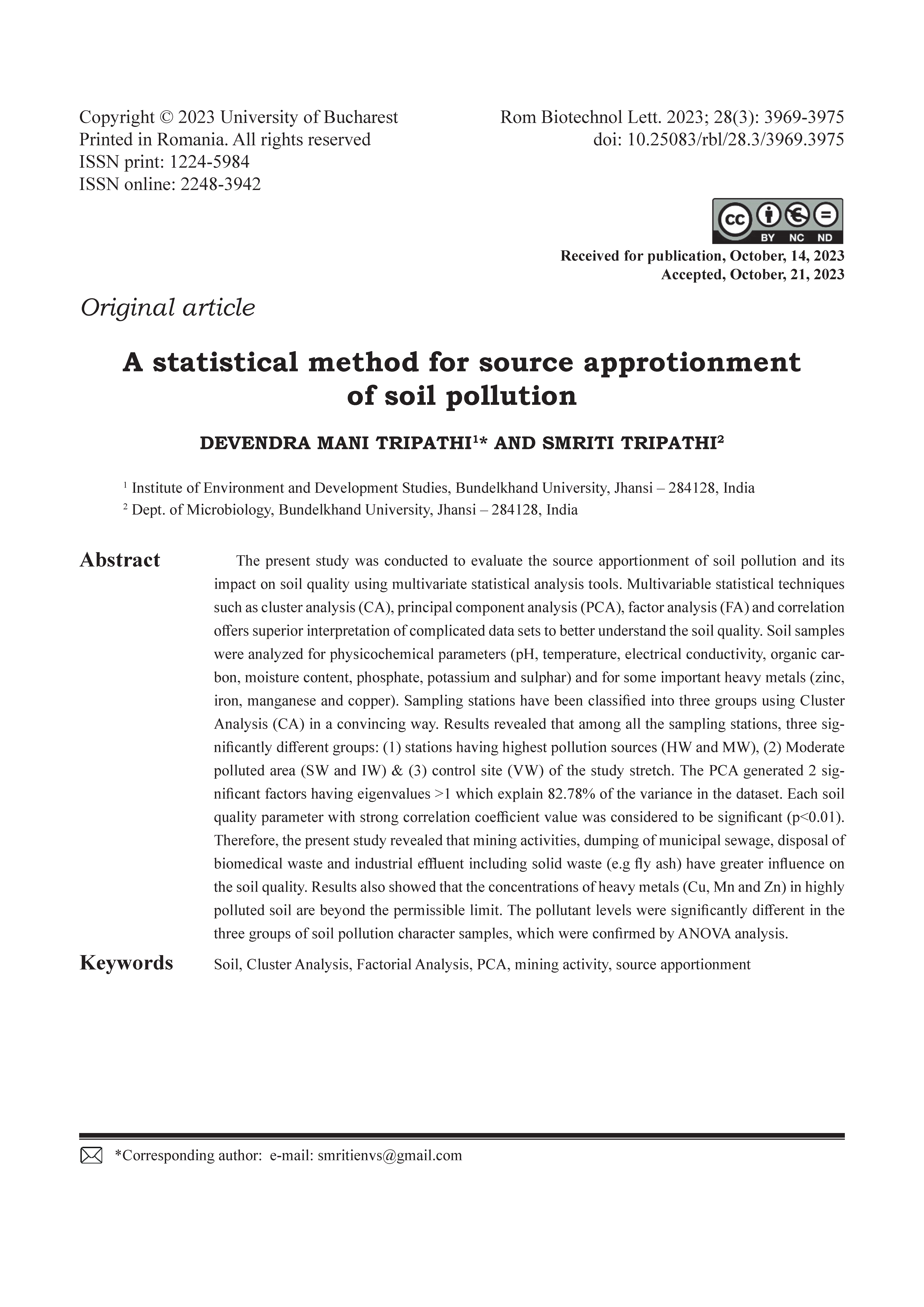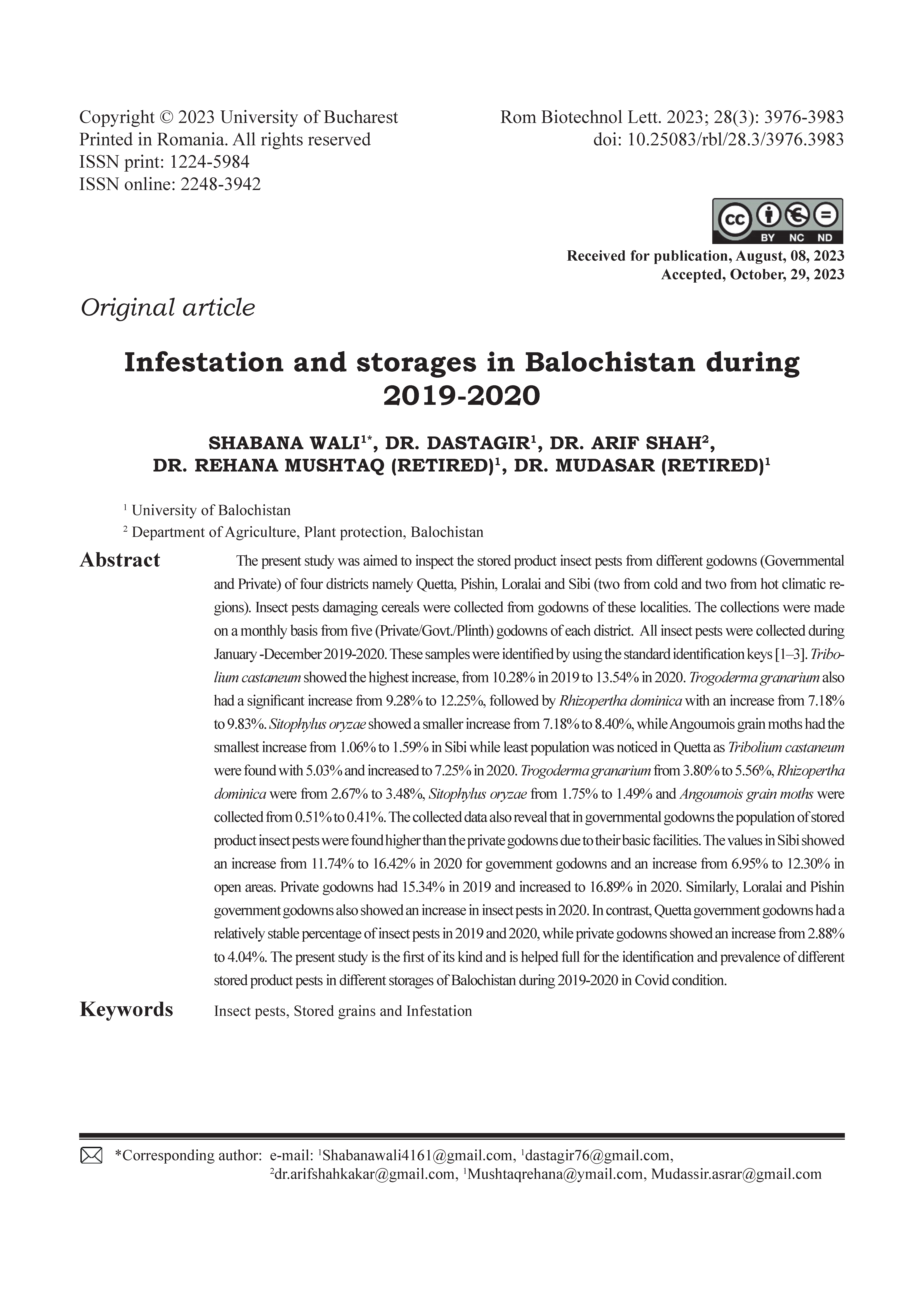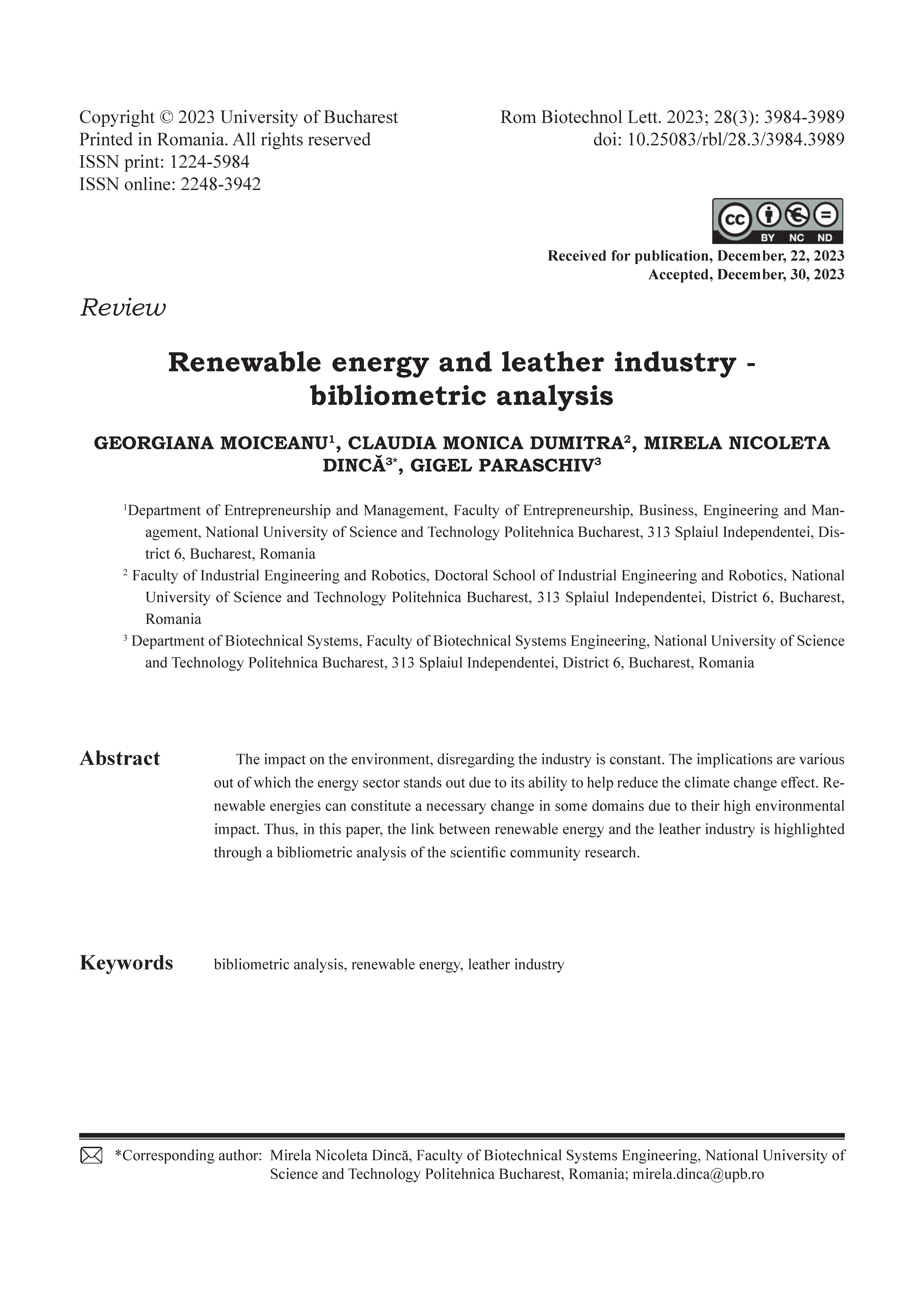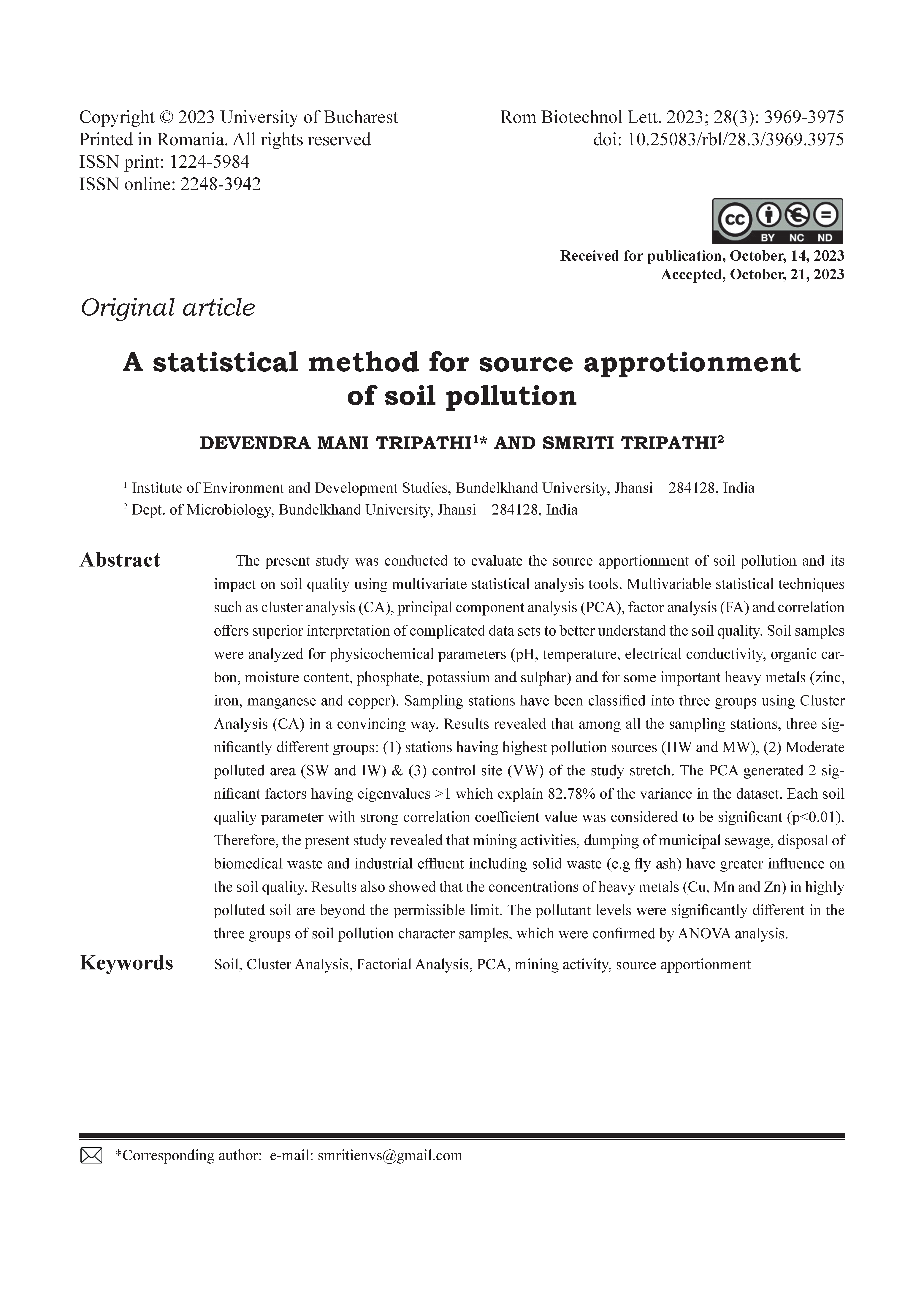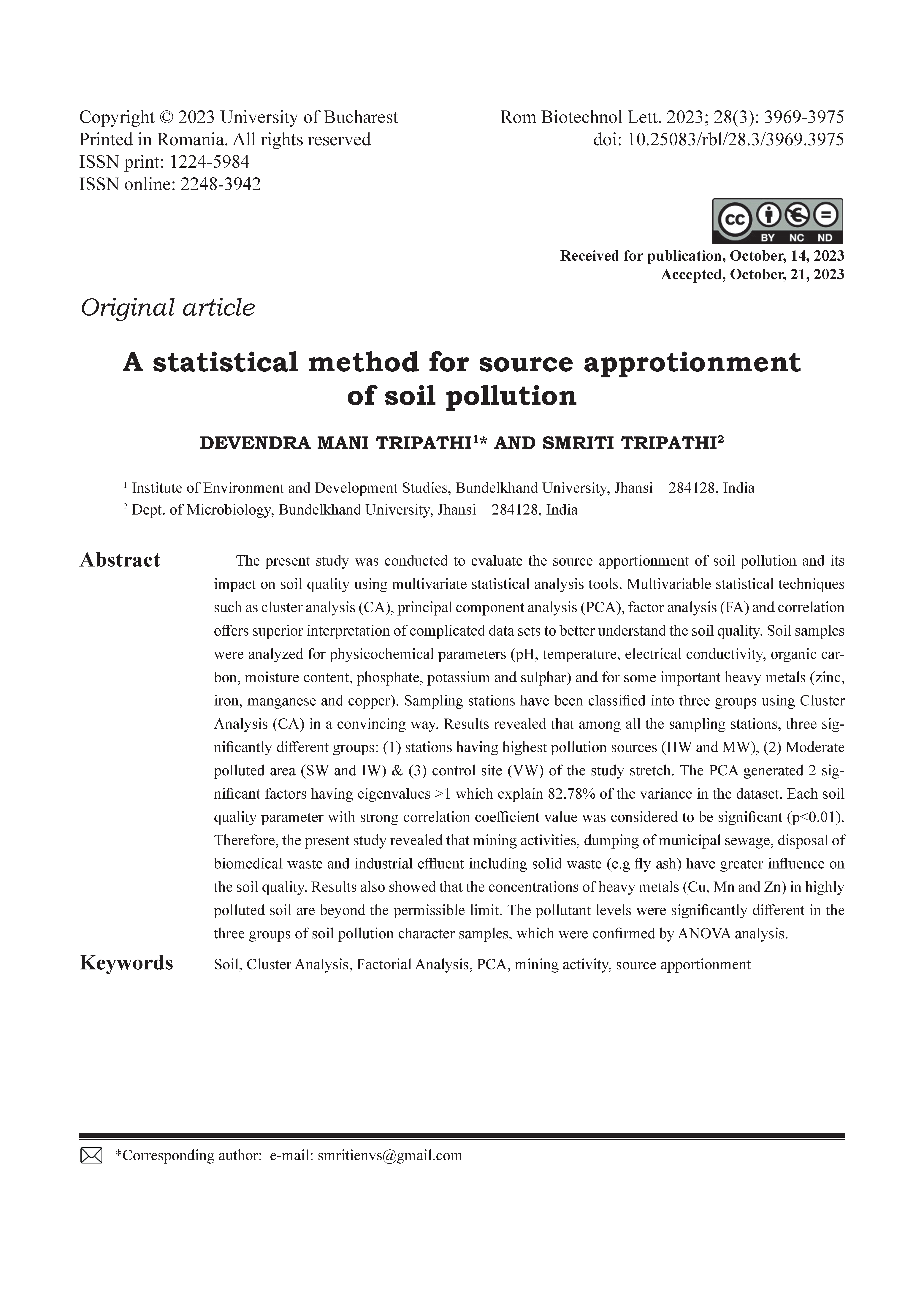Vol. 28 No. 3 (2023): Romanian Biotechnological Letters

The Journal publishes original research articles, reviews and short communications. The main thematic areas of publications supported by RBL are: cellular and molecular biology, applied microbiology (microbial ecology, industrial microbiology, medical microbiology, immunology), functional genomics, metabolic engineering, physiology, ecology, nanotechnology, agriculture and farming improvement techniques, development of experimental methodology in medical, materials, life sciences and biotechnology.
Published:
2024-07-02

